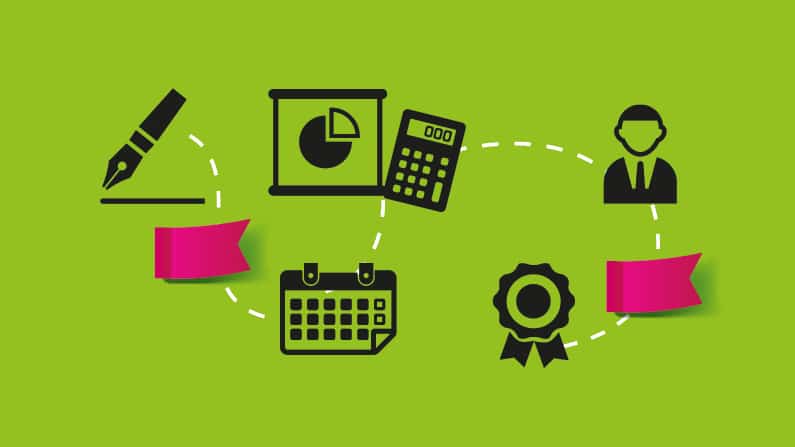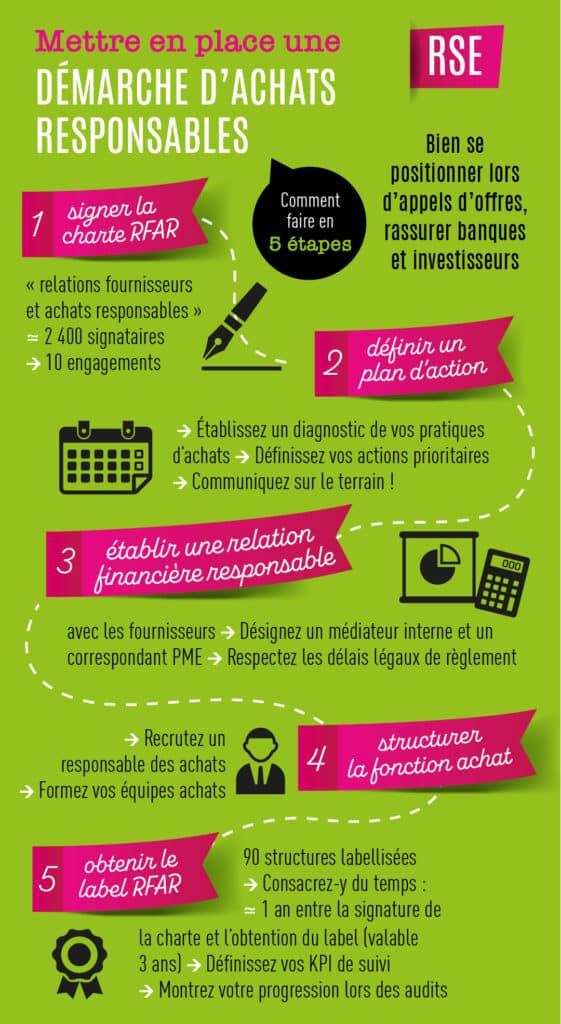Making a sustainable commitment to responsible purchasing has undeniable advantages for companies. For banks and investors, it means demonstrating a solid CSR strategy, and thus providing proof of the company's sustainability. As far as calls for tender are concerned, the responsible purchasing approach has become essential for scoring essential points. But it is also a long-term process.

Here are the 5 steps:
1. Sign the RFAR "responsible supplier relations and purchasing" charter
Some 2,400 signatory companies
10 commitments
2. Define an action plan in line with the company's vision and governance
- Diagnose the company's current purchasing practices
- Identify obstacles and solutions
- Define your priorities for progress
- Communicate: you need to ensure that the strategic vision reaches the grass roots!
For example:
- Organise seminars that bring together the company's entire purchasing function
- Nourish communication by drawing on "success stories", i.e. sites or teams that have successfully implemented the company's purchasing policy.
3. Establish a responsible financial relationship with suppliers
- Appoint an internal mediator and an SME correspondent
- Respect the legal deadlines for paying suppliers
- In times of crisis, pay your suppliers in advance
4. Structuring the purchasing function within the company
Recruit a purchasing manager to support the approach and guarantee its performance over time.
Start by training your staff in responsible purchasing. Then, depending on your needs, train them in eco-design, TCO (total cost of a product or service), purchasing risk management, and more specifically in subcontracting management, where many risks are concentrated.
5. Obtain the RFAR label
"Obtaining the RFAR label is an ambitious undertaking. But it is this label that helps to avoid the greenwashing effect. Only some 90 companies have been awarded the famous label, including large groups, SMEs and public bodies.
- Spend as much time as you need.
For an SME with 250 to 300 employees, it takes around a year from signing the charter to obtaining the label.
The in-house project manager, often the purchasing manager, will devote one day a week to the project.
- If necessary, enlist the help of a specialist consultancy firm.
The label is valid for 3 years.
With the label in your pocket, define your KPIs to measure the achievement of your objectives and continue to progress.
Demonstrate your progress during audits: initial audit, follow-up audit and renewal audit.






